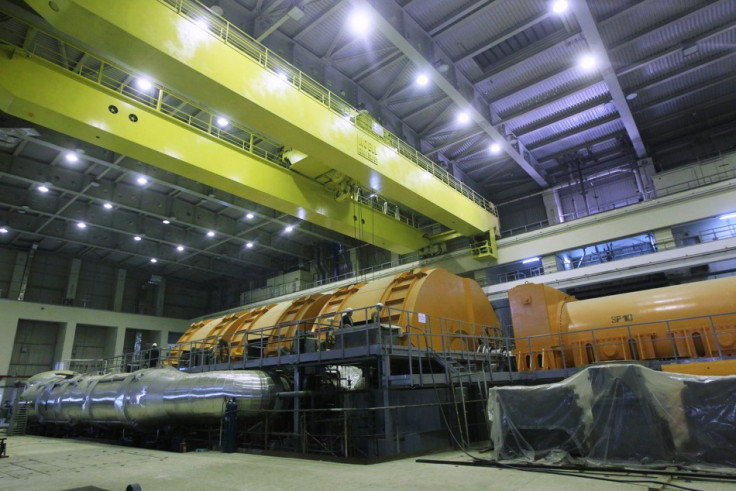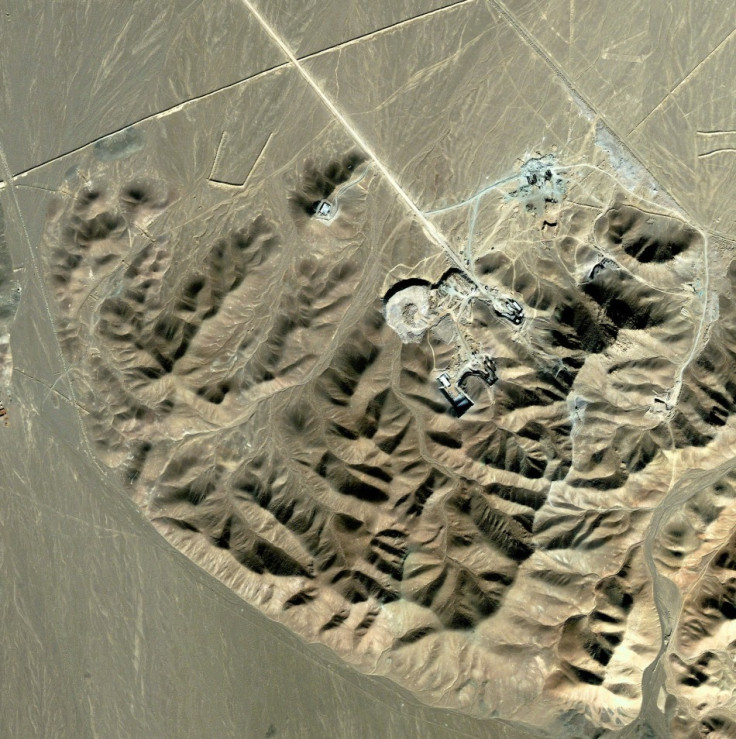Israel Monitors Seven Iranian Nuclear Targets
Israeli defence planners have drawn up a monitoring list of Iran's seven most important nuclear-related faiclities, from uranium mines to enrichment plants to power stations to potential weapon development silos.
They are located across the country and are all over 1,000 miles away from Israel.
An attack on Iran's nuclear installations based on satellite images of the locations would be highly risky, experts have warned but Israel has ruled nothing out in the nuclear standoff with Tehran.
1. Nuclear Power Station in Bushehr

Bushehr is the location where Iran houses two of its operating pressurised water reactors. Iran started its nuclear programme in 1974 with German help to build a nuclear power station in Bushehr, but was later completed with Russian assistance.
Iran had to abandon the project in 1979 because of the Islamic revolution. The project was revived in late 1990s after Iran's agreement with Russia. Russia has been providing enriched Uranium for the running of the plant since 2007.
The Bushehr plant was connected to the national grid in September 2010, which was confirmed by IAEA in October 2011 suggesting that the reactors are in operation.
Israel is not much worried about this facility, but feels that this site is the symbol of Iran's nuclear programme and the success of this facility is what has fuelled Iran's nuclear ambitions.
2. Uranium Mine in Gachin
Gachin is the uranium mine where Iran has been producing "yellowcake" or uranium ore concentrate, which is used for producing enriched uranium fuel for nuclear reactors. Iran confirmed in December 2010 that it had sent "yellowcake" or uranium ore concentrate from this facility for enrichment.
One of top most officials of Iran's nuclear programme was widely quoted by the media in early 2011 that first batch of yellowcake from Gachin was sent to a facility in Isfahan for enrichment.
It is generally believed that Iran started uranium mining operations at the Gachin facility in 2004 in place of the yellowcake imported from South Africa.
Israel believes that this facility has given strength to Iran to run its nuclear programme without depending on third parties for the supply of uranium ore. Coupled with an enrichment facility, which can purify uranium above 20 per cent level, this facility will help make Iran a nuclear power.
3. Uranium Conversion Facility in Ifsahan

Very little is known about the facility in Ifsahan except a once-public-admission by Iranian authorities that the facility has been receiving yellowcake for conversion.
The facility is capable of converting yellowcake into three forms such as hexafluoride gas used in gas centrifuges, uranium oxide used in reactors and uranium metal used in the cores of nuclear bombs.
International agencies like the IAEA had expressed concern about the possible use of any metal produced here since Iran's reactors do not run on metal fuel.
Israel feels that if Iran has been converting yellowcake to metal at this facility, it is close to producing nuclear bombs.
4. Uranium Enrichment Plant in Natanz
This is one of the most guarded nuclear facilities of Iran. Not much information is available as to when Iran began working on this facility.
According to available information, after an in-between break, Iran resumed uranium enrichment work at this facility in July 2004.
In September 2007, Iran said 3,000 centrifuges capable of enrichment were installed at this facility. Iran had informed the IAEA in 2010 that it would start construction of enrichment facilities in Natanz in March 2011.
Israel is concerned about this facility since the technology used for producing fuel for nuclear power is not much different from that of producing fuel for a nuclear explosion.
5. Enrichment Facility in Fordo

Iran acknowledged the existence of the Fordo facility, near the holy city of Qom, for the first time in September 2009.
The IAEA was first informed that the facility will produce uranium enriched up to a level of 5 per cent, which is the requirement of power reactors.
In 2011, the IAEA was informed that enrichment up to 20 per cent will be carried out at the Fordo facility, in order to stop fuel production at Natanz.
The IAEA confirmed in January, 2012 that Iran has started production of highly enriched uranium (HEU), which is the fuel enriched up to 20 per cent, at the Fordo facility.
Israel is worried about this facility because HEU with a concentration of 20% or more is used to build nuclear weapons.
6. Weapon Development Facility at Parchin
It is a key centre in Iran's munitions arsenal.
The site has facilities for research, development and production of various weapons, including explosives and rockets.
Though a 2005 IAEA inspection did not point out any evidence for nuclear weapons programme at the facility, a 2011 November report by the agency suggested that Iran has been using this site for testing various high explosives, which could be used in nuclear weapons.
Israel's concerns come from the fact that the facility is being used for testing high explosives, which could also include some miniature nuclear weapons or for using controlled nuclear explosions.
7. Heavy Water Plant in Arak
The Arak facility came to the notice of the international community in 2002 after a US agency published satellite imagery of the site, pointing out the possibility of a heavy water plant there.
An IAEA team visited the heavy water reactor site at Arak in August 2010 and reported that it is still being built and some equipment has already been installed. Iran submitted to the IAEA that the reactor is planned to start by 2013-end.
Based on satellite imagery, the IAEA recently suggested that the heavy water production plant is likely to be in operation now.
Israel is worried about the facility because heavy water is required to moderate the nuclear fission chain reaction in a certain type of reactors and is used to produce plutonium for making nuclear bombs.
© Copyright IBTimes 2025. All rights reserved.





















